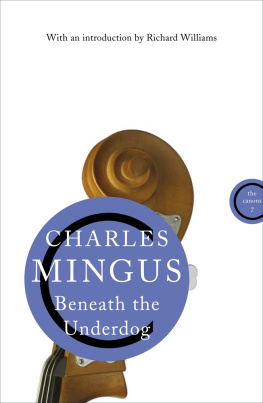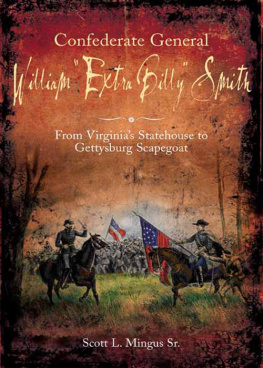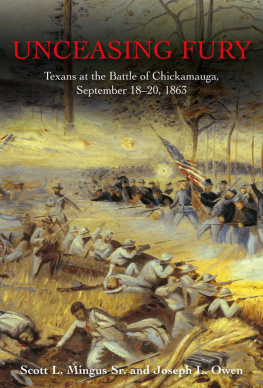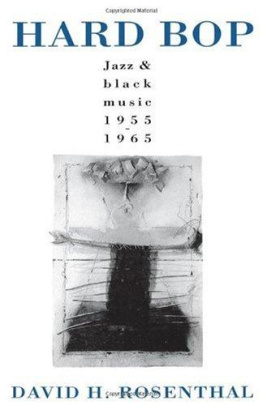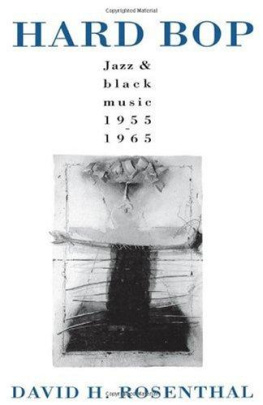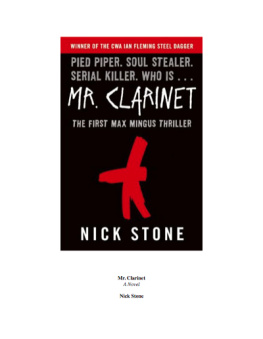Mingus - Beneath the Underdog
Here you can read online Mingus - Beneath the Underdog full text of the book (entire story) in english for free. Download pdf and epub, get meaning, cover and reviews about this ebook. City: United States, year: 2009, publisher: Canongate Books, genre: Detective and thriller. Description of the work, (preface) as well as reviews are available. Best literature library LitArk.com created for fans of good reading and offers a wide selection of genres:
Romance novel
Science fiction
Adventure
Detective
Science
History
Home and family
Prose
Art
Politics
Computer
Non-fiction
Religion
Business
Children
Humor
Choose a favorite category and find really read worthwhile books. Enjoy immersion in the world of imagination, feel the emotions of the characters or learn something new for yourself, make an fascinating discovery.
- Book:Beneath the Underdog
- Author:
- Publisher:Canongate Books
- Genre:
- Year:2009
- City:United States
- Rating:3 / 5
- Favourites:Add to favourites
- Your mark:
- 60
- 1
- 2
- 3
- 4
- 5
Beneath the Underdog: summary, description and annotation
We offer to read an annotation, description, summary or preface (depends on what the author of the book "Beneath the Underdog" wrote himself). If you haven't found the necessary information about the book — write in the comments, we will try to find it.
Introduction by Richard Williams. Mingus by Mingus. From the shabby roadhouses to fabulous estates, from the psychiatric ward of Bellevue to worlds of mysticism and solitude, these are the celebrated, demonic, anguished and, above all, profoundly moving memoirs of the great jazz bassist and composer Charles Mingus.
Beneath the Underdog — read online for free the complete book (whole text) full work
Below is the text of the book, divided by pages. System saving the place of the last page read, allows you to conveniently read the book "Beneath the Underdog" online for free, without having to search again every time where you left off. Put a bookmark, and you can go to the page where you finished reading at any time.
Font size:
Interval:
Bookmark:
INTRODUCTION
by Richard Williams
Never was there music in which violence and tenderness were so thoroughly entwined as that of Charles Mingus, the bassist, composer and bandleader who is one of the towering figures of American twentieth century music. In other words, never did music speak more directly or reflect more accurately the complexities and contradictions of mankind.
To a generation growing up nourished by the philosophy of the Beats in the late Fifties and early Sixties, there were three musical heroes: the three Ms Miles, Monk and Mingus. A triumvirate of unbiddable geniuses whose modern jazz seemed to propose nothing less than a new way of life, each of them invested his work with such a powerful character that it endures in a dilute form in the work of countless trumpeters, pianists, bass-players and composers today. But inevitably, jazz being what it is, their music as a living, evolving form died with them. You can play the trumpet like Miles Davis, you can pick out one of Monks oblique-angle melodies on the piano, and you can get a bunch of horns to play one of Minguss ardent, lyrical, many-voiced themes; but it will not bring them back to life.
Of the three, Charles Mingus is perhaps the least known to todays listeners, probably because his career was as disjointed and incoherent as his music was consistent in its ability to portray the chaos of the world, with all its cruelty and beauty. Where the introverted Monk let the world come to him and the sophisticated Davis played on its weaknesses and vanities, the truculent Mingus fought every battle head-on, heedless of circumspection or even self-defence. And, since jazz was then still supposed to be a part of the entertainment industry, his intransigence proved abhorrent to the moguls who wrote the cheques.
Yet the passing years strengthen his position among the finest creators of ensemble jazz, alongside Jelly Roll Morton, Fletcher Henderson, Duke Ellington and Gil Evans. To the world of the post-modernists, with their neat business suits and ferociously accurate reading of carefully transcribed musical texts, the unorthodoxy and unruly passions of Minguss compositions are a livid reproach. When we listen to the heaving multi-headed beast of Hog Callin Blues, the full-bottomed swing of Jump Monk or the Dionysiac swirl of Ysabels Table Dance, we find something that encompasses every phase of jazz, from the primitive through the mainstream to the ultra-modern, in a seamless unity, turning terms like primitive, mainstream and ultra-modern, and the assumptions with which they are freighted, into meaningless critical jargon.
The important thing about these men is that their music was so original because their lives were original. Daviss autobiography is one of several satisfying first-person accounts of the lives of jazz musicians (others include Hampton Hawess Raise Up Off Me and Art Peppers Straight Life). But there has never been an autobiography like Minguss Beneath the Underdog, written in the early Sixties but not published until 1971, in a version cut down to 365 pages from an original manuscript at least three times that length. A riveting work of highly subjective reminiscence and tortured self-analysis, it conveys the full pungency of the man and his times, thanks to a literary method which takes it closer to Coming Through Slaughter, Michael Ondaatjes poetic imagining of the life of the legendary New Orleans trumpeter Buddy Bolden, than to the method of a conventional autobiography.
But then Charles Mingus Jr did very little that was conventional, starting with his choice of parents. He was born on a US Army base at Nogales, Arizona on April 22, 1922; his mother, Harriett, the daughter of an Englishman and a Chinese woman, died less than six months after giving birth to her son, from an inflammation of the heart muscles. His widowed father, Sgt Charles Mingus, himself the progeny of a black farm worker and a Swedish woman, was given an honourable discharge and moved the family back to Los Angeles. There can be no doubt that this complex ancestry conditioned Charles Jrs equivocal view of the world, as expressed in the indelible opening lines of Beneath the Underdog, the startlingly bold expression of an identity crisis that extends far beyond the individual.
Minguss stepmother, Mamie, turned his mind towards music, both European classical and the singing of the Holiness Church, in which the legacy of Africa was filtered through Christianitys lens. This created artistic relationships which coloured all his adult work, whether by acceptance or, as sometimes happened, outright denial. His older sisters played the violin and the piano; his stepbrother learnt the classical guitar, while Charles played first the trombone, then the cello (with which he performed as a member of the Los Angeles Junior Philharmonic), and lastly the bass violin.
As an apprentice professional in the Forties, he participated in the wild Central Avenue scene Los Angeless equivalent of New Yorks 52nd Street and played alongside such giants as Charlie Parker, Dexter Gordon and Louis Armstrong, with whom he toured in 1942 until overcome by dismay at what he considered to be Armstrongs readiness to compromise with the white showbiz world. His own music began to crystallise in the middle of the decade, when he made his first recordings, sometimes under the extraordinary designation of Baron Mingus and his Symphonic Airs, a clear tribute to his idol, Duke Ellington. Miles Davis, who was briefly involved in Minguss ensembles during his stay on the West Coast with Charlie Parker in the mid-Forties, said: Mingus was a crazy, brilliant person and I never knew what he meant by that title. He tried to explain it to me once, but I dont think even he knew what he meant by it. But Mingus didnt do nothing halfway. If he was going to make a fool out of himself, he was going to do it better than anybody else ever did it. Mingus might have been crazy, but he was also ahead of his time.
Mingus occasionally played in other peoples bands during the early Fifties (notably with the exquisite Red Norvo Trio and with Parker and Dizzy Gillespie at the famous concert at Massey Hall, Toronto in 1953, which he recorded for his own embryonic record label), but he was on his way to a lifetimes work as the leader of his own ensembles. Soon he was beginning to use the title Jazz Workshop to describe music that borrowed from Ellingtonia, from bebop, from gospel and, for a while, from Europe. Gradually, however, the extraneous borrowings fell away, and during the late Fifties such compositions as Pithecantropus Erectus, Haitian Fight Song and East Coasting showed that his conception was coming into focus.
The Sixties produced a series of classic albums Blues and Roots, Ah Um, Oh Yeah, Tijuana Moods, Mingus Dynasty, Charles Mingus Presents Charles Mingus, The Black Saint and the Sinner Lady, and the live recordings from the Jazz Gallery, UCLA and the Monterey Jazz Festival among them in which he devised wonderfully imaginative settings for such magnificent soloists as the saxophonists Shafi Hadi, Booker Ervin, Roland Kirk and Eric Dolphy, the trumpeter Clarence Shaw, the trombonist Jimmy Knepper, the pianists Bill Evans and Horace Parlan and the drummer Dannie Richmond, rivalling Ellington in ability to devise a music perfectly balancing the overall scheme of the ensemble with the voices of the individuals. From time to time in the decade before his death he made more great music, but these are the albums, with such compositions as Goodbye, Pork Pie Hat, Open Letter to the Duke, Ecclusiastics, Wednesday Night Prayer Meeting, Orange Was the Colour of Her Dress, Then Blue Silk and Folk Forms No 1, on which his reputation will rest.
Of course, he was trouble. Big trouble often, even, to those who loved him most. His volatility was legendary, and by no means always amusing. He once punched Knepper in the mouth, unforgiveably damaging the faithful trombonists embouchure, and thereby impairing his ability to earn a living. When Dizzy Gillespie ran his spoof presidential campaign in the early Sixties, he nominated Duke Ellington for Secretary of State, Miles Davis for head of the CIA, Max Roach for Minister of Defence, Malcolm X for Attorney General, and Mingus for Minister of Peace because hell take a piece of your head faster than anybody I know. According to Miles Davis, He didnt take no shit off nobody. And I admired that in him. A lot of people couldnt take him, but they were scared to tell him to his face. I used to. It didnt scare me that he was so big. He was a nice, gentle cat who wouldnt hurt nobody unless they fucked with him. Then, watch out! He also had a gift for self-destruction to rival any rock star, sometimes detonating carefully arranged showcase concerts with a series of wholly unreasonable last-minute demands.
Font size:
Interval:
Bookmark:
Similar books «Beneath the Underdog»
Look at similar books to Beneath the Underdog. We have selected literature similar in name and meaning in the hope of providing readers with more options to find new, interesting, not yet read works.
Discussion, reviews of the book Beneath the Underdog and just readers' own opinions. Leave your comments, write what you think about the work, its meaning or the main characters. Specify what exactly you liked and what you didn't like, and why you think so.

